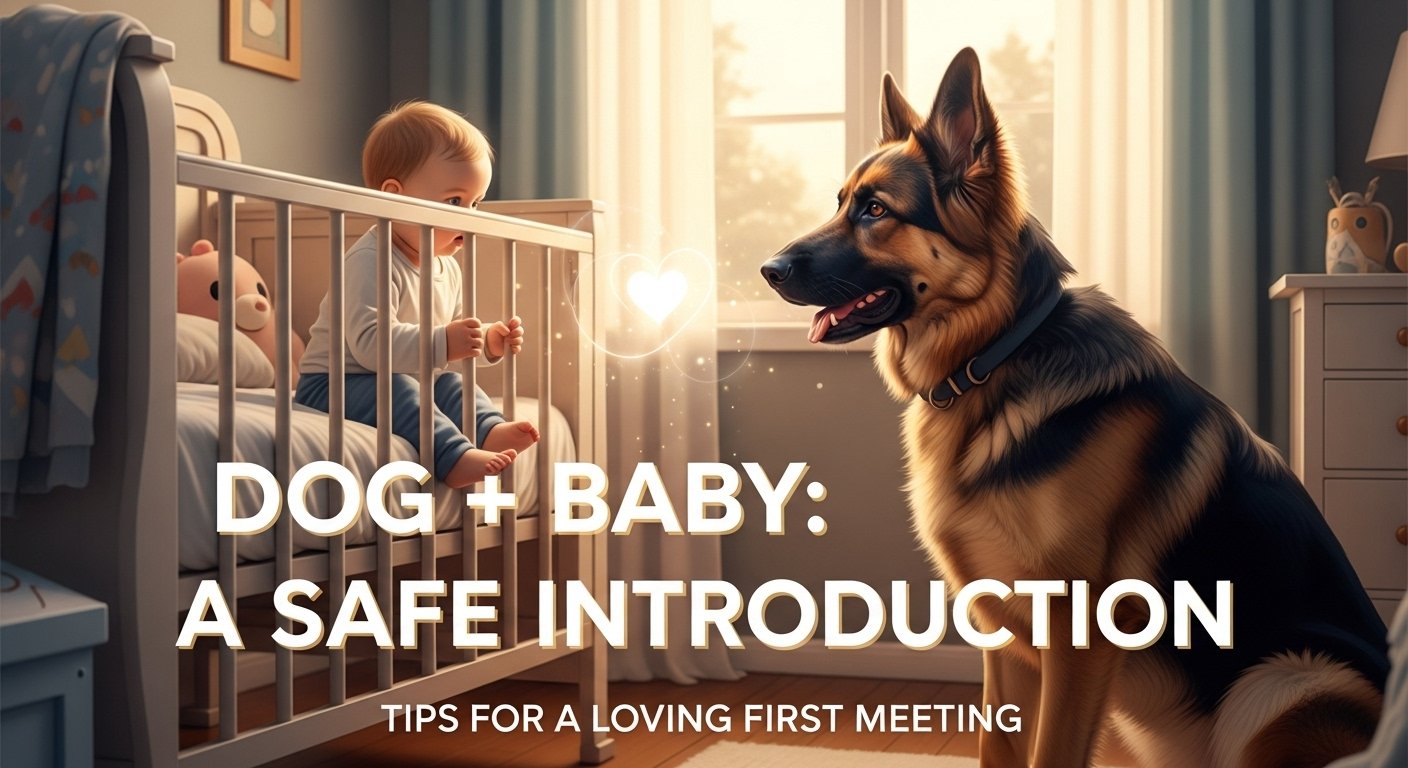
How to Introduce Your Dog to a Baby Safely
Bringing home a new baby is one of life’s biggest joys but if you have a dog, it can also feel a little nerve-wracking. Your pup, who may have been your “first baby,” now has to adjust to sharing your love, attention, and space with a tiny human.
Dogs are loyal and loving, but they’re also creatures of habit. A sudden change in the household like a new baby crying, new smells, and new routines can make them feel confused, stressed, or even jealous.
The key? Preparation and patience. With the right steps, you can help your dog accept (and even love) your baby, setting the stage for a safe and happy bond.
Here’s the ultimate step-by-step guide to safely introducing your dog to your new baby.
Step 1: Prepare Before Baby Arrives
Brush Up on Basic Training
Make sure your dog knows:
- Sit
- Stay
- Leave it
- Down
- Go to your bed/spot
These commands help you manage your dog around the baby. If needed, consider a refresher obedience class before the baby arrives.
Adjust Routines Gradually
Babies change everything including feeding, sleeping, and walking schedules. Start adjusting your dog’s routine before the baby comes so they’re not shocked by sudden changes.
- Vary walk times slightly.
- Get your dog used to shorter attention periods.
- Practice alone time with toys or chews.
Introduce Baby-Related Sounds & Smells
- Play recordings of baby cries at low volume while rewarding calm behavior.
- Use baby lotion or powder on your hands so your dog gets familiar with the scent.
- Set up baby furniture (crib, stroller, swing) so your dog adjusts before the baby arrives.
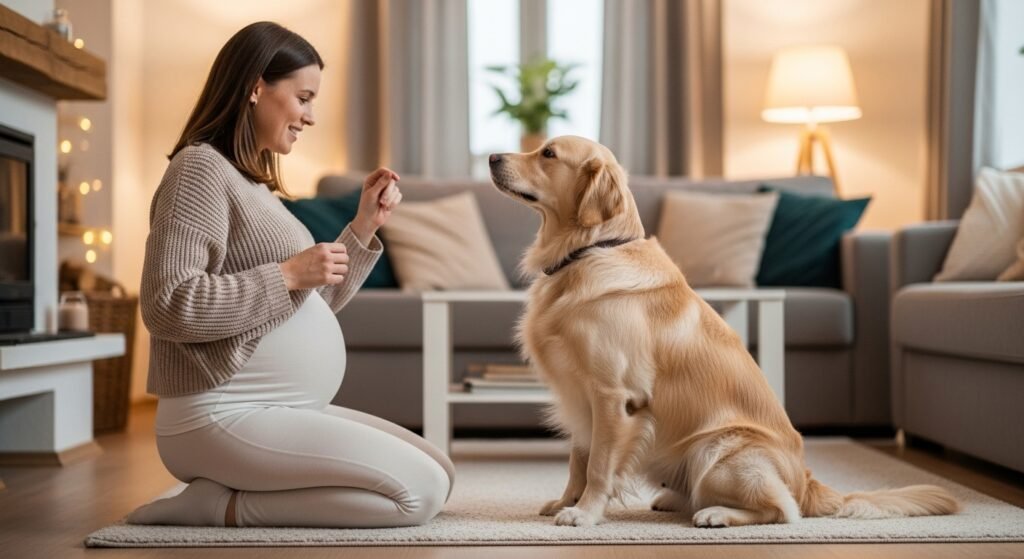
Step 2: Bringing Baby Home
When it’s time to bring your baby home from the hospital, make the first introduction thoughtful and calm.
Let Your Dog Smell Baby Items First
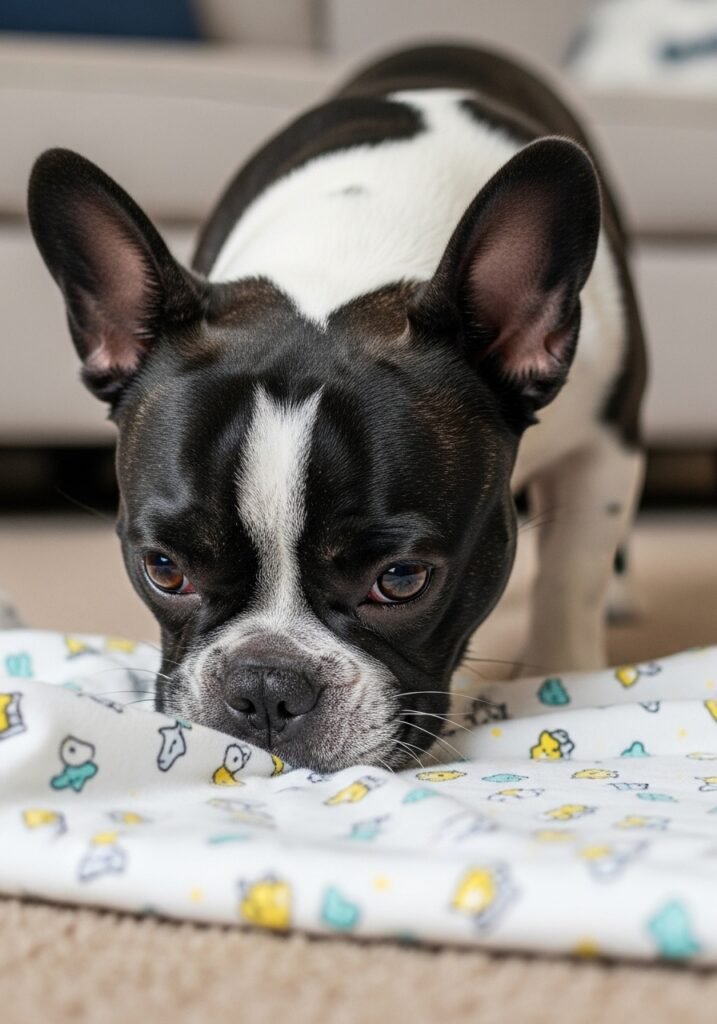
Before the baby comes inside, bring home a blanket, hat, or clothing your newborn wore. Let your dog sniff it while offering treats for calmness.
This tells your pup: “This new smell = good things.”
Keep the First Meeting Calm
- Have someone else hold the baby while you greet your dog warmly.
- Once your dog is settled, bring the baby in.
- Allow your dog to sniff from a safe distance.
- Reward calm behavior with gentle praise and treats.
Important: Never force your dog to approach the baby. Curiosity should happen naturally.
Step 3: The First Interaction
The first time your dog and baby meet is crucial.
- Keep your dog on leash at first for control.
- Allow a gentle sniff from a safe angle (avoid face-to-face contact initially).
- Speak calmly and reassuringly.
- End the interaction on a positive note before your dog gets restless.
This sets the tone: baby = calm, positive, safe.
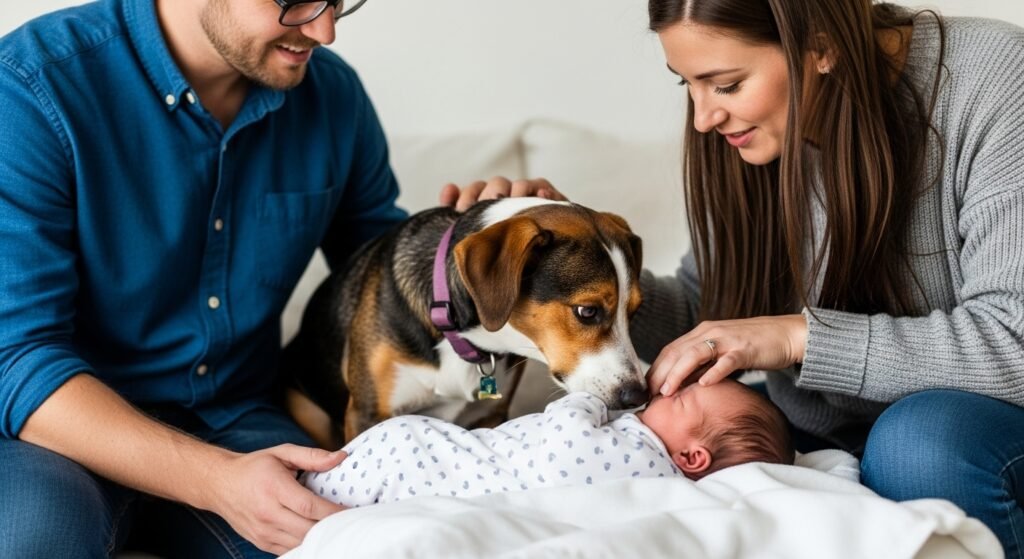
Step 4: Create Boundaries & Safe Zones
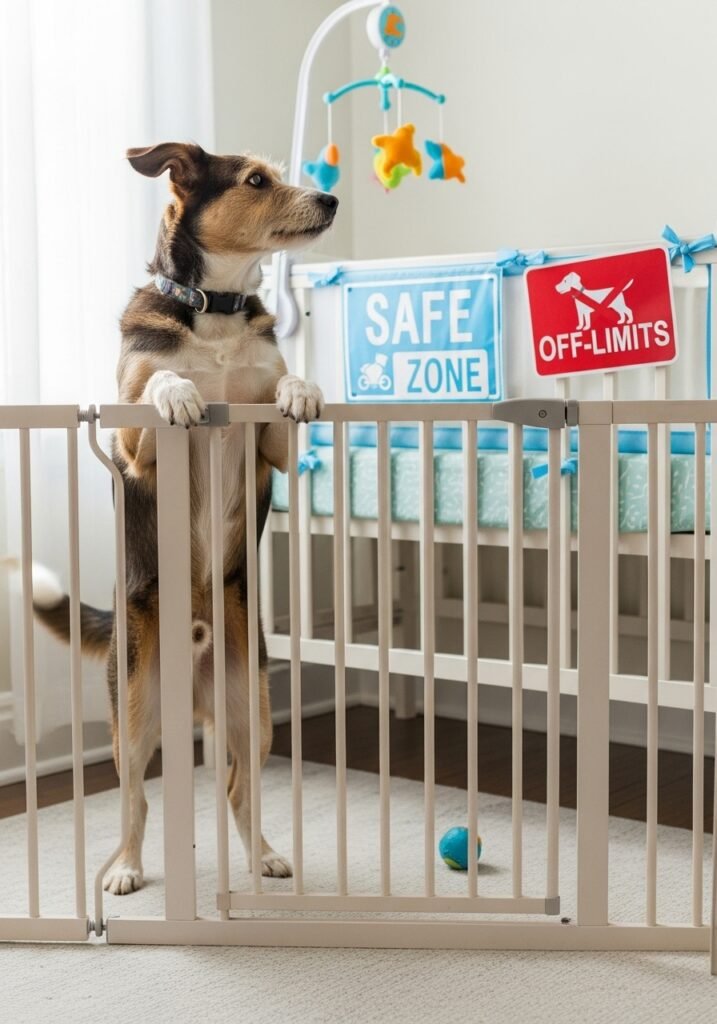
Your dog should know where they can and cannot go.
- Use baby gates to separate areas when needed.
- Give your dog a dedicated space (crate, bed, or playpen) where they can retreat and relax.
- Teach “off-limits” zones like the crib, bassinet, or changing table.
This prevents accidental knocks or overwhelming curiosity.
Step 5: Manage Attention & Prevent Jealousy
Dogs may feel left out when a baby arrives. Prevent jealousy by:
- Including your dog in family routines (sitting nearby during feeding or story time).
- Offering treats or toys during baby-related activities.
- Continuing daily walks and playtime (even if shorter).
Remember: Dogs don’t need hours of attention just consistency and positive moments.
Step 6: Supervised Together Time
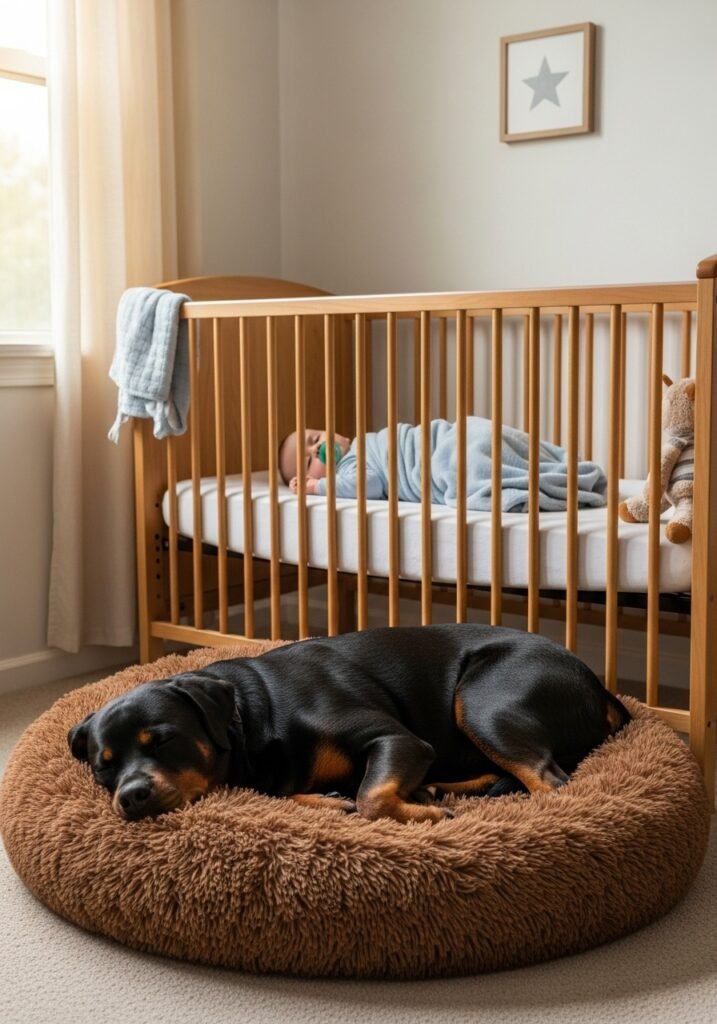
Never leave your dog and baby alone together. But under supervision, encourage gentle interaction:
- Let your baby and dog share quiet time on the floor (dog lying down, baby in your lap).
- Allow your dog to sit beside the baby stroller on walks.
- Reward calm proximity with treats and praise.
Over time, your dog will learn that being around the baby = peaceful, positive experiences.
Step 7: Watch for Warning Signs
Dogs communicate stress before they react. Watch for:
- Lip licking
- Yawning
- Turning away
- Growling or stiff posture
If you see these, calmly redirect your dog and give them space.
Step 8: Long-Term Harmony
As your baby grows, so does the relationship. Keep building trust with:
- Consistent routines for both dog and baby.
- Teaching the child respect (no tail pulling, rough play).
- Positive reinforcement every time your dog behaves well near the baby.
Many dogs eventually become protective companions, watching over the baby and forming strong bonds.
Common Mistakes to Avoid
- Rushing introductions – patience is key.
- Punishing your dog around the baby – it creates negative associations.
- Neglecting exercise – a bored, restless dog is harder to manage.
- Leaving baby and dog alone together – never safe, no matter how trusted the dog.
Final Thoughts
Introducing your dog to a new baby is about patience, consistency, and positive associations. With preparation before the baby arrives, calm first introductions, and ongoing supervision, your pup can go from nervous to nurturing.
Remember: Your dog doesn’t just lose attention they’re gaining a family member. By setting the right foundation, you’re giving your child a loyal guardian and your dog a lifelong friend.
Dogs and babies can grow up together in harmony and it starts with a thoughtful, safe introduction.
Ready to Connect?
Enjoyed learning about big dog breeds? Join the Pets Fun Zone community — a growing space for U.S. pet lovers to:
Share photos, stories, and experiences
Ask questions and get advice
Discover recs for food, training, vet care, and more
Join us today at Pets Fun Zone and be part of a caring community of passionate dog lovers!
Let’s welcome all the gentle giants together.



